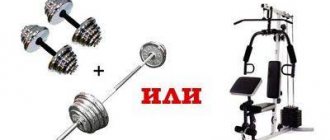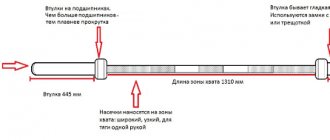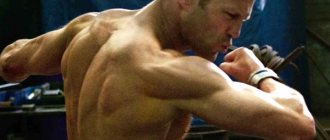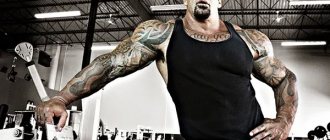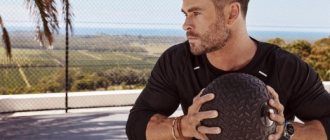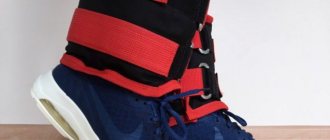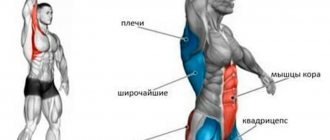Now MMA in Russia is strongly associated with Khabib Nurmagomedov. But just a few years ago, Fedor Emelianenko was the symbol of mixed martial arts. Now the Last Emperor has retired, and gives not very spectacular and infrequent performances with the same veterans. But at the peak of his fame, which was almost all of the 2000s, he became a legend.
Let's take a closer look at Fedor Emelianenko's technique and the features of his training.
Bellator
91
7
Fedor Emelianenko
Russia
#Fedor Emelianenko
Basic style and its formation
Although Fedor has a lot of great stand-up moments, his base is wrestling. From the age of 10 (that is, from 1986) he practiced sambo and judo. In 1997, after demobilization, with an interval of 2 months, I received an MS, first in sambo, then in judo, and a year later I also received an MSMC in sambo. While serving in the army, he hardly developed combat skills; Emelianenko served first in the fire troops, and then in the tank troops. But if he had been sent to the Airborne Forces, special forces or reconnaissance, perhaps this would have given an additional advantage to his technology?
I began to study drumming seriously relatively late, at 23 (that is, in 2000), under the leadership of Alexander Michkov. Michkov is a USSR MS in boxing, a coach of the old school, and over the years of his work he has trained a total of 15 MS in boxing and sambo. As he himself said in an interview in 2009, Fedor quickly mastered striking in a standing position thanks to good coordination.
Personal life
Fedor met his future wife Oksana at a sports camp. Emelianenko came with the team to the training camp, and the girl worked as a counselor. The girl faithfully awaited the return of her betrothed from the army. The wedding took place in 1999, but 7 years later the couple announced a divorce. From her first marriage, Emelianenko has a daughter, Maria.
In 2007, the Russian athlete was in a romantic relationship with Marina and they had a daughter, Vasilisa. Two years later, the couple formalized their relationship. In 2010, another daughter, Elizaveta, was born. Marina rarely appeared at social events, preferring to devote all her time to her daughters and husband. In 2013, the fighter decided to separate from his second wife.
A year later, the fighter returned to Oksana and the couple got married in church. In 2017, Fedor became a dad for the fourth time. The fighter had a fourth daughter.
Features of the technology
We’ll talk about striking and wrestling separately a little later, and then we’ll talk about other aspects of technique and character:
- Preparing for your opponent. However, this is the case with all serious athletes: when the opponent is known, he is studied (tactics, crowns, strengths and weaknesses, physiological data), and sparring partners with similar techniques are selected. For example, before the fight with the basic kickboxer Cro Cop, Fedor flew to the Netherlands and specially trained with Thais and kickboxers;
- Calm in battle. The blank expression on his face is something that foreign viewers often notice. In combat, this is also useful because it makes it more difficult for the opponent to understand whether he hit well and whether he should rush into the attack;
- Great experience. Even an amateur who has been training for 5+ years works confidently in combat. Fedor came to MMA at the age of 23, having 13 years of training behind him. As a result, strikes, techniques and combinations have been practiced to the point of automaticity, a good sense of distance, control of the space around, the ability to take a blow and choose a solution for different situations. This is a big plus: experience is often lacking for MMA athletes who have trained for 1-3 years and enter the cage;
- Resistant to damage. It was difficult to bring down young Fedor. A striking example is the fight with Kevin Randleman. An ideal (in terms of technique) executed deflection throw seemed to have no effect on Fedor at all, although for most other fighters it would have ended in a knockdown at best. Another example, already with the “late” Fedor, is the fight with Maldonado (we will mention him later): having caught two side kicks in the jaw, Emelianenko remained on his feet.
In general, Fedor’s tactics are essentially simple: apply pressure if pressure is applied. If the opponent allows, the Last Emperor actively attacks and breaks the distance, delivering blows mainly with his hands, or in a dense series of side blows, or sharply at a jump.
Next, we’ll look at striking and wrestling separately.
Nutrition
Fedor does not hide the range of his diet; he directly states that he absolutely does not limit himself in food and eats what he likes. But he completely rejects fast food and cola. He is not interested in additives - he considers them useless or harmful. He loves exclusively his wife’s and mother’s dishes...
Percussion technique
Let's start with the basic things, namely the stance, how the fighter meets the opponent.
Rack
Fedor’s stance itself is technically far from ideal: he keeps his hands low and often spreads his elbows to the sides. But he shifts to 5+, like professional heavyweight boxers: not by jumping (like Conor McGregor, for example), but by short steps, saving strength.
His boxing coach said about Fedor’s stance that he often hears criticism (about his hands hanging low). But when Michkov put his hands correctly, in a classic boxing stance, Fedor more often missed: it was so uncomfortable for him. As a result, the stance was left as it was - the one we saw in most fights, a little relaxed and unusual for boxers.
Udarka
A common occurrence is when the base wrestler is weak in striking (and vice versa: the base striker is weak in wrestling).
Fedor is a rare exception: he is good in stand-up, despite the fact that he started doing it a little late. True, we are talking only about hands - the Emperor rarely hits with his feet. Although this is rather his personal preference: in judo there are kicks, plus several times Fedor flew to the Netherlands specifically to work on Muay Thai with Ernesto Host (4-time winner of the K-1 Grand Prix, who defeated Mirko Filipovic 3 times), Johan Vos and Lucien Carbin.
A striking example of the fact that Fedor is good at striking is the fight with the same Cro Cop. A pure striker, Filipovich expected Fedor to impose a ground game and threatened to interrupt him in the standing position. But Emelianenko surprised both his opponent and the whole world by the fact that he spent most of the fight standing, clinching well, clearly taking the enemy’s low kicks, pressing and even throwing high kicks.
Regarding the hand work: Fedor did not use the jab often. He used his front hand more often to jerk his opponent, often moving it up and down. As a result, the opponent was constantly tense, expecting a punch either to the head or to the body.
Signature strikes and connections
Fedor's striking crowns include side punches (often in series), overhand rights, and ground and pound.
Fedor often strikes from the side not in a horizontal straight line, but in an arc, slightly from above, “throwing” his fist behind the guard. In my younger years, you could often see a series of powerful side kicks. In this way, Fedor often broke his opponent, pressing him to the net/ropes, or developed a successful attack. In terms of technique, we see the same drawback here as in the stand-up: Fedor hits hard, but sweepingly, opening up and not holding one hand to his chin.
And there were cases when this got in the way. Let's give a couple of examples:
- In a fight against Kazuyuki Fujito (2003), Fedor pressed him to the ropes and began to hit him with sweeping side kicks. But Fujito did not go on the defensive, but successfully responded with a right to the temple, so much so that Emelianenko miraculously remained on his feet;
- Fight against Fabio Maldonado (2016). In the first round, the Brazilian caught the attacking (with his hands down) Fedor with two successful side kicks to the jaw, knocking him to the floor, and only miraculously did not end the fight with a finishing move. And there are more such examples from the Emperor’s career.
The second punch is a cannon overhand right. That’s exactly how, with one successful powerful poke, Fedor knocked out Brett Rogers, Satoshi Ishi, and Pedro Rizzo. In classical boxing, such a blow is considered risky: if it doesn’t go through, and if the opponent manages to counterattack, there will be trouble. But in MMA, the classic boxing skills of most fighters are not developed at such a high level. Plus, Fedor honed this blow to the point of automaticity, delivered it quickly, and confidently felt the moment when he could punch it.
Another advantage of Fedor’s striking is ground and pound. It would seem like a simple matter: the opponent has already fallen, and you just need to hang on and finish him off. But Emelianenko has worked this out especially well: he actively puts pressure on the fallen man, and is not afraid to get closer (since he is not afraid of being transferred to the ground).
Struggle
Fedor has 3 wrestling moves:
- Elbow lever: out of 15 victories by submission, Fedor won 7 times with this technique. Including the Korean giant Choi Hong Man;
- Rear choke;
- And the third is kimura. The shoulder knot brought 3 victories to Fedor. He often demonstrates the technique of performing it at seminars.
As for the wrestling technique itself: Emelianenko skillfully and actively combines it with striking, but his arsenal of techniques used is relatively small. If we look at a clip of the attacks of Fedor and, for example, Khabib Nurmagomedov, we will see that Orel often goes to the legs, and is generally more versatile in terms of takedowns and ground attacks.
Coming to MMA
In the 2000s, Emelianenko entered the ring as part of the team of the Russian Top Team martial arts club. The last Emperor leaves the club due to dishonesty of the management. The fighter joins the Red Devil Fighting Team mixed martial arts club.
Emelianenko agrees to participate in fights under the patronage of MMA and signs a contract with the Japanese sports organization Fighting Network Rings. The athlete competed in 12 fights and also won the fight for the championship belt in absolute weight. In 2001, the Russian won the Rings championship belt.
The fighter’s success attracted the attention of the Pride Fighting Championships organization and they lured Emelyanenok to their side. Fedor’s famous sparring match was with the Brazilian jiu-jitsu master Antonio Rodrigo Nogueira. For six years, Nogueira was unbeaten, but still lost to the legendary Russian champion.
In 2006, Pride awarded Emelianenko the title of 4-time world champion in martial arts. In total, under the patronage of Pride, the Last Emperor won 14 victories (another fight was declared invalid). In the same year, Fedor signed a contract with the international company M-1 Global (currently the fighter is its co-owner). The fight with Tim Sylvia brought the Russian fighter another champion title - the WAMMA belt.
Fights under the patronage of the American organization Strikeforce were not the best for Emelianenko. The Russian easily defeated Brett Rogers, but lost to Fabrizio Werdum and Bigfoot (Antonio Silva).
In 2011, Emelianenko went against Jeff Monson. Vladimir Putin personally congratulated the Russian fighter on his win. The following year, The Last Emperor entered the ring against Pedro Rizzo and won. After the fight, the champion announced his desire to retire from the sport.
4 years later, Emelyanenko’s triumphant return to the ring took place. The fighter comes out and defeats Jaideep Singh. The Russian champion defeated the Indian fighter by technical knockout. Over the next three years, the athlete fights four more times and loses only to Matt Mitrione.
Fedor Emelianenko training
Depending on the stage of preparation for the fight, Emelianenko Sr. can train from 3-4 times a week to 2-3 times a day. To recover, he goes to the bathhouse and walks twice a week.
From the story of Fedor’s former sparring partner, Roman Zentsov, in preparation for the fight with Filipovic in 2005, the training day looked something like this:
- Morning: 5 km run in the mountains, then warm-up and shadowboxing;
- Day: 10 km run in the mountains, physical exercises, 1 hour of wrestling;
- Evening: 5 km run, punching practice.
Another interesting fact was revealed by another partner, Kirill Sidelnikov: in sparring with Fedor, the task was to either knock him out, or he would knock you out. And not everyone could withstand such training battles.
Endurance
The main types of loads are running (up to 12-15 km with acceleration, at the peak I ran up to 20 km a day) and wrestling on the ground.
Strength exercises
Probably everyone has seen the photo of the young Emelianenko brothers against the backdrop of the Soviet wall with protein in Alexander’s hands? There Fedor is still relatively sculpted. In his youth (up to 24 years old) he worked with iron, and brought the bench press to 180 kg.
Photo from the personal archive of Fedor Emelianenko
Later, Emelianenko retired from working with iron. As he himself said, exercises with a barbell do not provide the endurance that can be gained in wrestling, and can even harm fighters. And the best weight is the weight of the opponent and the strength with which he resists.
Fedor considers the main training to be working with his own weight: parallel bars, horizontal bar (he could do up to 25-30 pull-ups per set with his weight of 100+ kg), abdominal exercises, tire work, different types of planks and static exercises, jump rope, push-ups, squats . All exercises are built in a circle, like in CrossFit. To practice the force of impact, he uses a sledgehammer and shot put.
Nutrition
According to Fedor himself, his diet is not particularly limited. The only items missing from the menu are fast food, cakes, sweets and carbonated drinks (although on holidays it can sometimes be slack). For breakfast he usually eats an omelet, and during fasting he eats oatmeal cookies and nuts. For lunch - he eats the first, second and third (usually meat, if fasting - fish). For a long time I didn’t even consume proteins and amino acids, but after 30 years I started taking pharmacy vitamin complexes, and, for recovery, I still started using sports nutrition. As Fedor says, when you are 23-27, you don’t feel particularly tired, and you recover quickly. But later recovery takes more effort and time, and the body copes worse on its own.
Of course, these are only the basic features of the Great Fighter's technique and training; in fact, Fedor alone knows all the secrets thanks to which, after decades of fighting, he still remains one of the best heavyweights in history. But even the information that lies on the surface is enough to understand how universal and effective Emelianenko’s technique was, which allowed him to become what he is today.
Photo source: mmafighting.com
Manager
In parallel with the battles, Fedor began training his own team. The idea to create a project of talented young student wrestlers came to the athlete in 2015, during negotiations with the Japanese promotion RIZIN. For this, Emelianenko selected the best and most promising guys he found in his native Stary Oskol.
View this post on Instagram
A post shared by Fedor Emelianenko (@fedoremelianenkoofficial)
Fedor Emelianenko in the
Wrestler suit proved himself in the new business not only as a coach of the younger shift, but also as a manager. Fedor created conditions for training for the team, and also contributed to the participation of his players in RIZIN, Fight Nights, and Bellator fights. In the latter, the wrestlers stayed for a long time. For the brainchild of the Last Emperor, they chose a bright and memorable name Fedor Team.
The project became noticeable in Bellator, but other athletes had a hard time getting onto the team. Emelianenko personally took charge of promoting the careers of each of the members of his “family”, negotiated, and extracted good fees for the fighters. They, in turn, approached the process responsibly and gave their best in training and competitions.
